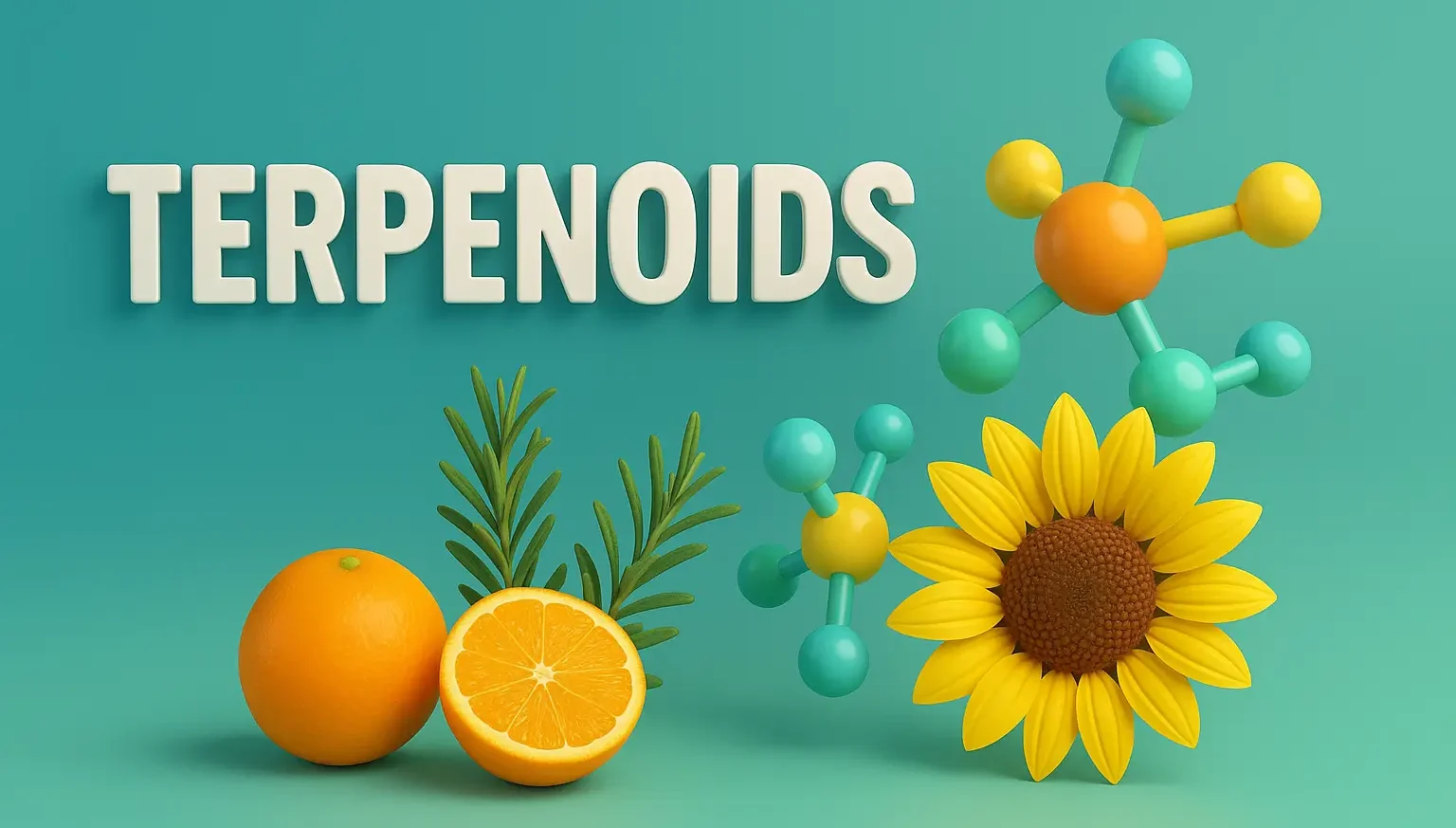Definition of Terpenoids:
- Terpenoids, or isoprenoids, are a diverse class of naturally occurring organic compounds derived from five-carbon isoprene units.
- They undergo modifications like oxidation and rearrangement, resulting in varied structures and functions.
Structure and Classification of Terpenoids:
- Based on isoprene units:
- Monoterpenoids: C₁₀ (2 units)
- Sesquiterpenoids: C₁₅ (3 units)
- Diterpenoids: C₂₀ (4 units)
- Triterpenoids: C₃₀ (6 units)
- Tetraterpenoids: C₄₀ (8 units)
- Polyterpenoids: >C₄₀
Biosynthesis:
- Produced via:
- Mevalonate Pathway: In cytosol of eukaryotes and some prokaryotes.
- MEP Pathway: In plastids of plants and most bacteria.
- Both pathways generate isopentenyl pyrophosphate (IPP) and dimethylallyl pyrophosphate (DMAPP).
Occurrence in Nature:
- Widely found in plants, contributing to aromas, flavors, and colors. Also present in animals, fungi, and some bacteria.
- Common sources include essential oils, resins, and waxes.
Advertisements
Biological Activities and Uses:
- Ecological Roles: Defense against herbivores/pathogens; attract pollinators.
- Pharmaceuticals: Medicinal properties like anti-inflammatory and anticancer (e.g., paclitaxel, artemisinin).
- Industrial Applications: Fragrances, flavorings, solvents, and synthetic material precursors.

